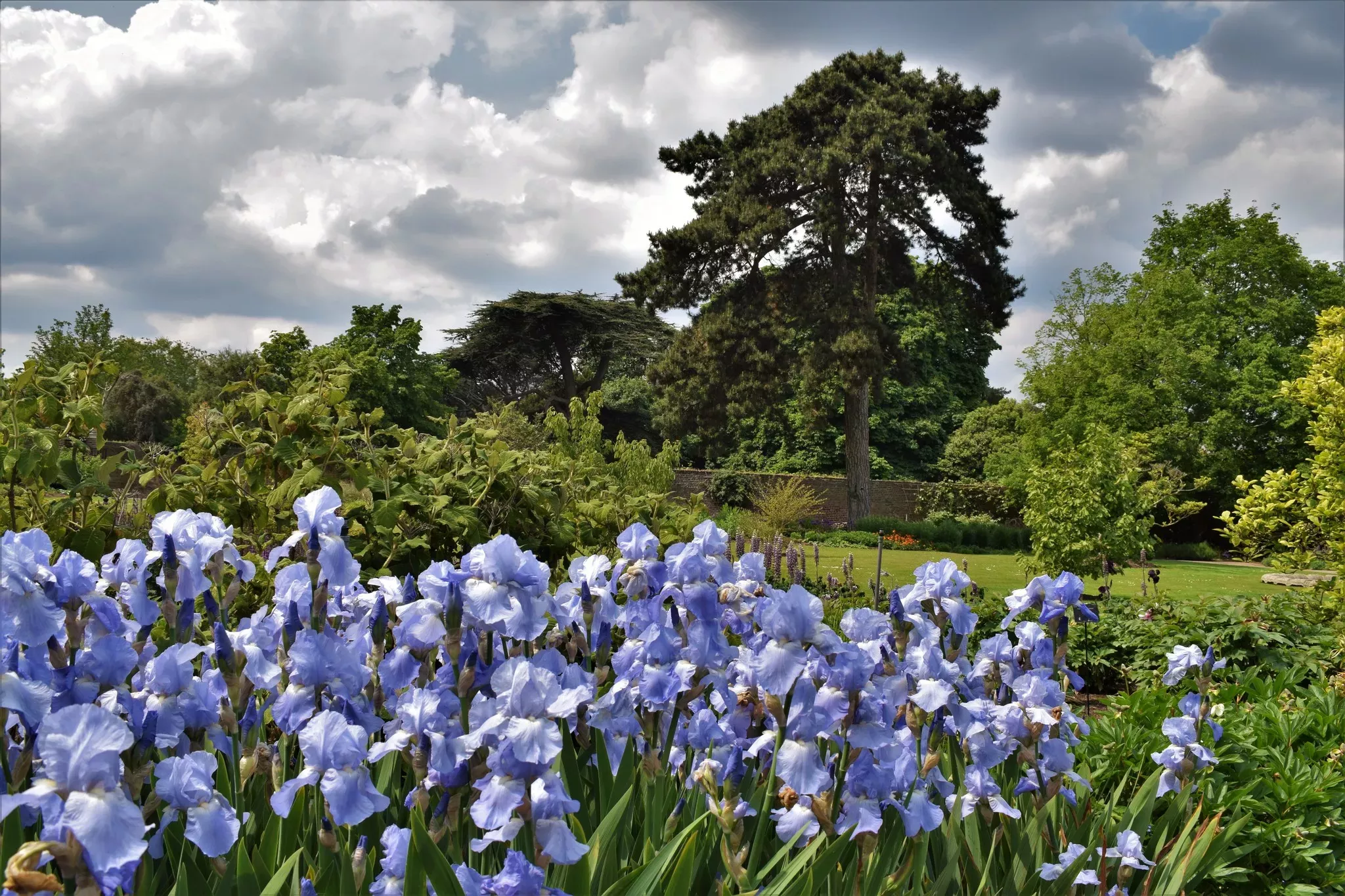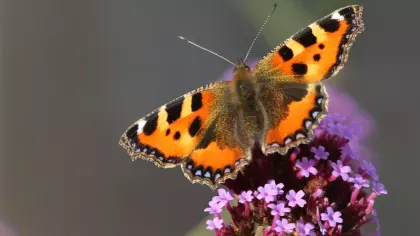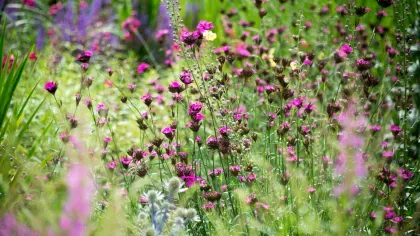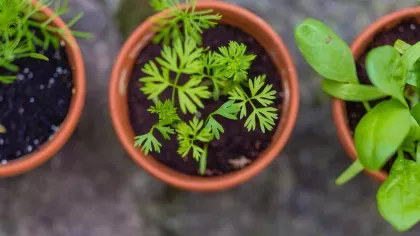3 June 2020
Plants on your street
Identify the hidden gems growing under our noses.

In hedgerows, on roadsides and in verges, there are many plants quietly growing around us that go unnoticed.
But take a closer look and there's more to them than meets the eye. From pollinating heroes, to homes for wildlife, we round up our favourites.
Daisy
The common daisy (Bellis perennis) is a familiar flower that springs up on lawns and in parks and can be seen flowering almost all year round.
A single stem carries the flower head, but this is not just one flower. The yellow centre and white petals are lots of flowers put together in a compound structure called a capitulum.
This clever adaptation increases the number of flowers that can be pollinated by one single visit from a pollinator.
Keep an eye out for the larger oxeye daisy, which can reach 60cm in height. It blooms from July to September and is a particular favourite of butterflies.

Cow parsley (Anthriscus sylvestris)
Common on roadsides and verges, this pretty plant is recognisable by its tall stems and white spray of flowers.
It grows rapidly in summer and is in flower through May and June. Look out for umbrella-like clusters of white flowers on stalks, which come from the same centre.
Pollinators love this plant and it attracts lots of insects. It’s an early source of pollen for bees and hoverflies and a source of nectar for orange-tip butterflies.
It was used in traditional medicines to treat a variety of ailments like stomach upsets and colds.


Buttercup
The common golden yellow creeping buttercup (Ranunculus repens) likes to grow in gardens, parks and fields.
It has long, rooting runners which means it can spread fast across grassy areas.
It's pollinated by short-tongued bees, who are attracted to the pollen. The flowers are open and flat, which allows the bees to reach the pollen more easily.
Meadow buttercups (Ranunculus acris) are more commonly seen in meadows and pastures.
They have a chemical in their sap called protoanemonin, which is poisonous to cattle. You can often see large number of them in cattle fields because cows stay well away from them.

Nettle (Urtica dioica)
Nettles have a bad reputation because of their stinging green leaves.
The stems and undersides of leaves are covered in hairs which cause the sting. Although painful for humans, it's an important adaptation for these plants to deter nibbling predators.
Nettles are often found in meadows and verges, but prefer soil that is rich in nutrients.
Large clumps of nettles in the wild can be a sign of ancient human settlements, as they grow well in soil that has been enriched with human waste.
Nettles are an important food source for wildlife, including the caterpillars of peacock and red admiral butterflies.
At Kew's restaurants, we forage for nettles in the Gardens to use in quiches, as well as nettle shoots and flowers for our salads. They have a flavour similar to spinach and are rich in Vitamin C.

Bramble (Rubus fruticosus)
From hedgerows to clifftops, brambles can grow in many different environments. They have strong roots that grow very quickly.
Look out for their white and pink flowers that bloom in the spring and summer. Their fruits are the familiar blackberry, which start to grow and ripen in July and August.
Pollen from the flowers make a great source of food for honey bees and bumble bees, and the leaves are also a favourite of deer.
Blackberries make a sweet snack for foxes and badgers, and the seeds are dispersed in their poo.

Dandelion (Taraxacum officinale)
Bees and butterflies love these bright yellow flowers for their pollen, and birds like goldfinches and sparrows eat the seeds.
Dandelion flower heads turn into fluffy round balls of seed known as 'clocks'.
The dandelion is another common plant that is edible; the flowers can be used to make wine and the leaves can be added to salads. The roots can also be roasted and ground up to make a coffee substitute.




